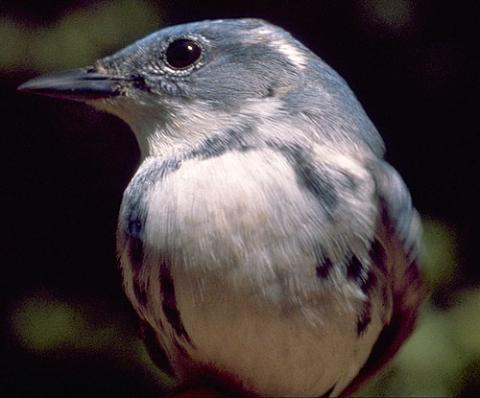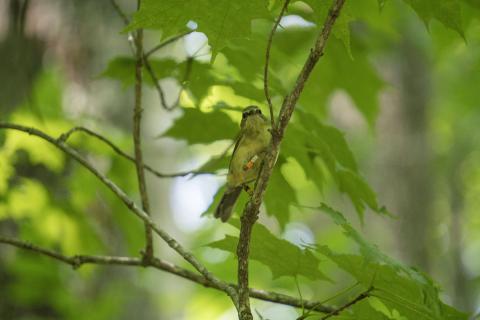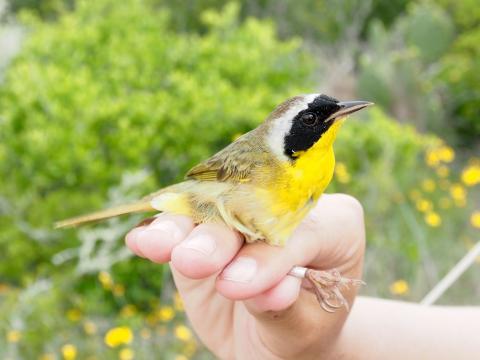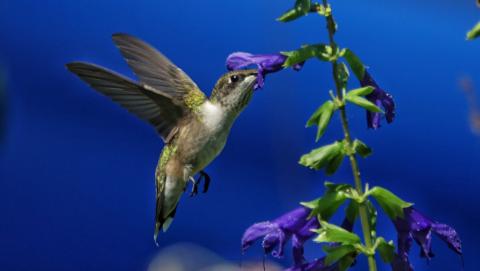News Archive
Filter By
- Abyssinian ground hornbill
- Addax
- Aldabra tortoise
- Allen's swamp monkey
- Alpaca
- American alligator
- American avocet
- American bison
- American flamingo
- American wigeon
- Andean bear
- Aquatic caecilian
- Arapaima
- Asian elephant
- Asian small-clawed otter
- Asian water dragon
- Australian snake-necked turtle
- Bald eagle
- Baltimore oriole
- Barred owl
- Bearded emperor tamarin
- Beaver
- Bennett's wallaby
- Binturong
- Black-and-white ruffed lemur
- Black-crowned night heron
- Black-footed ferret
- Black-tailed prairie dog
- Black-throated blue warbler
- Blue-billed curassow
- Blue crane
- Bobcat
- Brown pelican
- Bufflehead
- California sea lion
- Canvasback
- Cedar waxwing
- Channel catfish
- Cheetah
- Chicken
- Chinese alligator
- Chinese three-striped box turtle
- Clouded leopard
- Collared brown lemur
- Common raven
- Common yellowthroat
- Corals and sea anemones (anthozoa)
- Cow
- Crocodile monitor
- Cuban crocodile
- Dama gazelle
- Degu
- Dunlin
- Eastern indigo snake
- Eastern newt
- Eastern red-backed salamander
- Eastern screech-owl
- Eld's deer
- Electric eel
- Emperor newt
- Fennec fox
- Fishing cat
- Gaboon viper
- Geoffroy's marmoset
- Gharial
- Giant leaf-tailed gecko
- Giant panda
- Goat
- Golden-headed lion tamarin
- Golden lion tamarin
- Gray seal
- Gray wolf
- Green tree python
- Grevy's zebra
- Guam kingfisher (sihek)
- Guam rail (ko’ko’)
- Guinea pig
- Harbor seal
- Hartmann's mountain zebra
- Hawk-headed parrot
- Hellbender
- Home's hinge-back tortoise
- Hooded crane
- Iranian fat-tailed gecko
- Japanese giant salamander
- King vulture
- Komodo dragon
- Kori bustard
- Kunekune pig
- Land hermit crab
- Larger Malay mouse-deer
- Lemur leaf frog
- Lesser hedgehog tenrec
- Lesser kudu
- Lion
- Loggerhead shrike
- Long-tailed chinchilla
- Long-tailed salamander
- Maned wolf
- Meerkat
- Miniature donkey
- Naked mole-rat
- North American porcupine
- North American river otter
- Northern Luzon giant cloud rat
- Northern pintail
- Northern red salamander
- Northern snakehead fish
- Northern tree shrew
- North Island brown kiwi
- Norway rat
- Orangutan
- Orchard oriole
- Ossabaw Island hog
- Ostrich
- Ovenbird
- Pallas's cat
- Panamanian golden frog
- Patagonian mara
- Persian onager
- Philippine crocodile
- Prehensile-tailed porcupine
- Prevost's squirrel
- Przewalski's horse
- Pygmy slow loris
- Red-crowned crane
- Red-fronted lemur
- Red-rumped agouti
- Red-winged blackbird
- Red knot
- Red panda
- Red River hog
- Red ruffed lemur
- Red wolf
- Ring-tailed lemur
- Ruddy duck
- Schmidt's red-tailed monkey
- Scimitar-horned oryx
- Screaming hairy armadillo
- Semipalmated plover
- Semipalmated sandpiper
- Siamang
- Sitatunga
- Sloth bear
- Southern lesser galago
- Southern swamp sparrow
- Southern tamandua
- Spider tortoise
- Striped skunk
- Tanagers
- Tentacled snake
- Tiger
- Titi monkey
- Turkey
- Twig catfish
- Two-toed sloth
- Vietnamese mossy frog
- Virginia opossum
- Von der Decken's hornbill
- Western lowland gorilla
- White-cheeked gibbon
- White-faced saki
- White-naped crane
- White-nosed coati
- Whooping crane
Displaying 2301 - 2325 of 2362 articles.
Daring to be Different
The game of survival is all about carving out your niche and being successful in it. Within the natural world, few birds play this game better than the American dipper (Cinclus mexicanus).
A Closer Look at an Ordinary Species
To many bird enthusiasts, the white-throated sparrow is just an "average Joe." In fact, I suspect that few birders living in Canada and the eastern United States have celebrated the long-awaited addition of the white-throated sparrow to their life lists.
Consummate Opportunist
Few birds are so easily identified in flight as a crow, cutting a sharp, sleek image against the sky or a woodland edge with powerful, deliberate wing beats and black form.
Bird of Coffee and Chocolate
The Baltimore oriole is perhaps the most famous neotropical migratory bird. Its brilliant orange and black plumage is reminiscent of the crest of Lord Baltimore, an important figure in Maryland's history, and the bird has become the mascot of the Baltimore Orioles baseball team.
Toughest of Birds, Dressed Up as a Clown
The harlequin duck (Histrionicus histrionicus) is a cult bird. I came to this conclusion very early in life. I grew up birding in Northern California in the '60s and '70s when breeding harlequins had been gone so long there they didn't even qualify as an ornithological memory.
Swamp Thing
The northern waterthrush ( Parkesia noveboracensis) is a swamp thing, a seeker of wet woodlands far from where most people go. Summers are spent amid the swamps and sluggish rivers of the far north's forests, with beavers, moose, and bears for neighbors. In winter, they head south to tropical swamps...

The Suburban Bird
The widespread American robin is one of our most familiar birds and its arrival in spring is eagerly anticipated.

The Coffee Warbler
Despite its misleading name, the Tennessee warbler neither breeds nor over-winters in the state of Tennessee. This species got its name when the first specimen collected had the misfortune of being shot by Alexander Wilson in 1832. This unlucky individual happened to be passing through Tennessee...
Big Mouth, Small White Bib
As darkness descends along rural roadsides from Texas to Argentina, mysterious ember-like dots appear near ground level. Reflecting the beams of car headlights, this orange glow emanates from the eyes of a cryptic bird of the night known as the Common Pauraque. With the onset of twilight, pauraques...
Herds of Hungry Deer Spell Change for U.S. Forests
By John Barrat, Smithsonian Office of Public Affairs Something is squirming inside a white athletic sock marked with the number 16 and hanging from the belt of biology student Jessica Hollis. Standing in the deep woods of the Smithsonian National Zoological Park's 3,200-acre Conservation and...

A Blue Birding Prize
For many North American birdwatchers, the Cerulean Warbler is one of the most sought-after species during spring and summer. This elusive, azure-colored songbird is uncommon over most of its breeding range, and spends the majority of its time high in the forest canopy, giving it a reputation for...
The Early Bird
Eastern Phoebes are one of the first migratory birds to arrive in the spring in the northeastern United States. They often appear in March, well ahead of the peak migration for most forest songbirds (in May), and they are one of the last to leave in fall, with the peak of migration in October. Their...
Twilight Serenade
The sun is just about to rise on a cool December morning on the Eastern Shore of Maryland. The birds awaken at the forest edge and begin calling vociferously: the harsh "shack" call of the Northern Mockingbird, a variety of "chip" calls from cardinals, sparrows, and yellow-rumped warblers, and the...

Happy Blue Warbler
In summer in the Appalachian Mountains, its buzzy zoo zoo zoo zee song can often be heard drifting from dense stands of rhododendron and mountain laurel. As the naturalist Lynds Jones wrote in 1899, “The song is uttered in a spirited manner while the bird is feeding and flitting about in the foliage...
The Master Sap Tapper
Although its name sounds like an insult Yosemite Sam might sling at Bugs Bunny, the yellow-bellied sapsucker's moniker aptly describes its appearance and habits. Both males and females indeed have a pale yellow underside, and tree sap constitutes a large portion of this woodpecker's diet. In fact...

Warbler in Disguise
On a cool spring morning in downtown Baltimore this year, the breeze was blowing and the hustle and bustle of an urban city were evident.
Winged Pirate of the High Seas
An Arctic Tern hovers high above the water, zeroing in on the fish it intends to take back to the nest to feed its ravenous young. With perfect precision, it dives head first into the water and is back in the air within seconds, the fish dangling from its bill. Urged on by parental instinct, the...

Island Misfits
Most birders in North America are no doubt familiar with the orange-crowned warbler ( Oreothlypis celata). The species breeds throughout the western U.S. and across the boreal forest from Alaska to Newfoundland, winters in much of Mexico and the southern U.S., and migrates through a broad swath of...
Sitting in the Catbird Seat
Singing from a concealed perch, the catbird truly enjoys its comfortable position. With its tail held down, body feathers fluffed, and wings drooping at its sides, the catbird exuberantly sings a series of musical whistles and catlike meows, interspersed with imitations of other birds' songs. Video...
The Troubled Blackbird of the Bog
Once upon a time, you could, on a summer's day, count on hearing the creaky song of the Rusty Blackbird ( Euphagus carolensis) filtering from the bog lands of the boreal forest. Decades ago, on a winter's day, one could reliably locate small flocks of Rusties foraging at the edge of the swamps in...
Bird of Many Voices
Wait. I think I hear a Summer Tanager calling from that shrub over there. No, it sounds more like a Great Crested Flycatcher. But, in a shrub?? No I think I'm hearing a Rufous-sided Towhee!? Is this a strange flock? Hold it, I see a bird that's small and olive, with some yellow below…It's a White...
A Migratory Bird with Sexual Equality?
This species is well named for its blue-gray head that contrasts with white 'spectacles' yellow sides, white wing bars, a greenish back and white belly and throat. However appropriate the name, birders may find the process of naming this vireo confusing. It is clearly the victim of changing...
Royalty of the Boreal Marshes
When birdwatchers list their most beautiful birds, the Swamp Sparrow is seldom, if ever, mentioned. In the world of ornithological aesthetics, sparrows get short shrift. They do not possess the vibrant and gaudy colors of a warbler, tanager, or toucan. However, some bird aficionados tire of spectral...

The Hummingbird Diet: How To Gain Weight And Keep It
Like a sumo wrestler, the rufous hummingbird must rapidly gain weight and keep it on, despite extraordinary physical exertion. Weighing in at a little more than a penny, it must double its body weight in order to fuel its migration from breeding grounds in the Pacific Northwest (Alaska to northern...
¿Por qué a las aves migratorias les fascina el café?
En medio de un ambiente cada vez más alterado y reducido, tanto en Norteamé-rica como en la América Latina, las aves migratorias han hallado un santuario en un entorno semejante al de los bosques en las plantaciones de café tradicionales.
